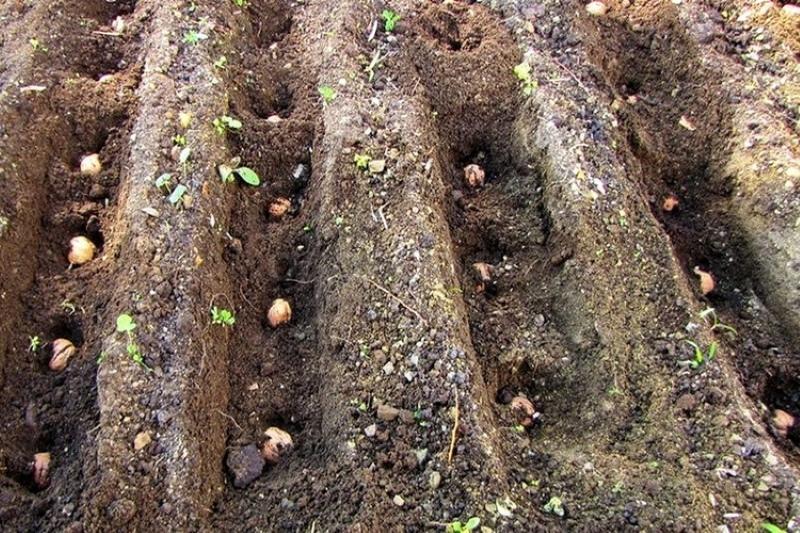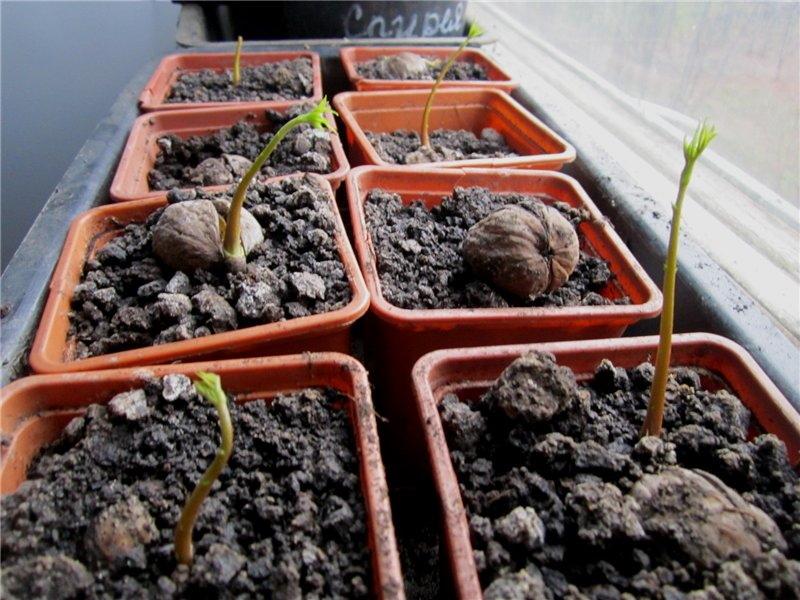How to plant walnuts from walnuts - spring and autumn planting
 As you know, even the fastest nut will have to wait three years for the first harvest. Therefore, most often, many gardeners prefer to buy seedlings. But if you already have a mature tree, it doesn't hurt to know how to plant a walnut from a nut tree. Of course, it will take longer to wait for the first fruits from your own seedling than from a purchased adult seedling. But in this way you will not only multiply your favorite variety, but also save money. After all, young trees, especially varietal ones, cost decent money. You can also make a profit by selling your seedlings.
As you know, even the fastest nut will have to wait three years for the first harvest. Therefore, most often, many gardeners prefer to buy seedlings. But if you already have a mature tree, it doesn't hurt to know how to plant a walnut from a nut tree. Of course, it will take longer to wait for the first fruits from your own seedling than from a purchased adult seedling. But in this way you will not only multiply your favorite variety, but also save money. After all, young trees, especially varietal ones, cost decent money. You can also make a profit by selling your seedlings.
How to plant walnuts from walnuts
For planting, use only fresh large nuts, harvested in the fall, with whole and undamaged shells. You can land them in two ways:
- In the fall, directly into the open ground. Prepare the planting pit by adding ash, fresh manure and superphosphate. Water and place the nuts on their sides, covering them with earth. Given the density of the shell, in this case they will germinate longer. Sometimes sprouts appear altogether only next spring. To speed up the process a little, treat the fruit before planting in a growth promoter.

- In the spring. Put the nuts collected in autumn for storage in the basement, where they will also pass stratification... But not just like that, but by putting them in a box with wet sand. Spray it periodically during the winter. At the beginning of spring, the nuts will already have sprouts. Transplant them into separate grow pots. In the open ground, seedlings can be planted at the end of May, when frosts pass.

Each method has its own pros and cons. When planting in spring after stratification, you will quickly get fruit with sprouts. But you will have to tinker a little with creating conditions for storing nuts, plus prepare a place in the house for pots with seedlings. An autumn planting will allow you to avoid this fuss, but the nuts will germinate longer. But the seedlings do not need to be transplanted, which will help to avoid damage to the roots.
Features of caring for a nut seedling
 If, when planting, you fertilize the hole by adding fertilizer, the next couple of years, care for the seedling is minimal. Cover the trunk circle to conserve moisture. Do not forget to water the tree every 2-3 weeks, taking into account natural precipitation. It also does not hurt to set up a peg support and tie up the nut so that the wind does not break it. And in the first winter, it is better to cover the seedling by wrapping it in spandbond. In subsequent years, the grown trees hibernate without shelter.
If, when planting, you fertilize the hole by adding fertilizer, the next couple of years, care for the seedling is minimal. Cover the trunk circle to conserve moisture. Do not forget to water the tree every 2-3 weeks, taking into account natural precipitation. It also does not hurt to set up a peg support and tie up the nut so that the wind does not break it. And in the first winter, it is better to cover the seedling by wrapping it in spandbond. In subsequent years, the grown trees hibernate without shelter.